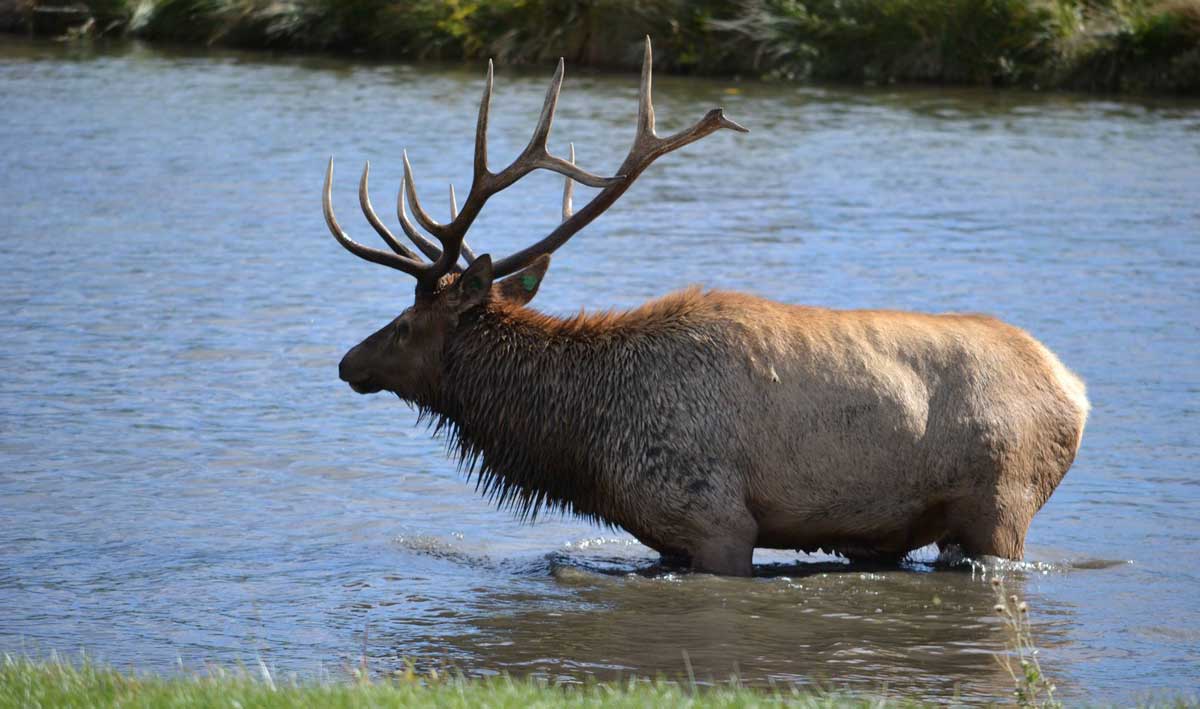All cervids are excellent swimmers. Hollow hair and rich fat help make elk buoyant and insulate them from the danger of hypothermia in frigid waters.
Yearly migration routes—particularly in mountainous areas—often require elk to cross creeks and rivers swollen from spring run-off. Calves only a few days old can navigate substantial rivers but may require days of coaxing before they’ll take the plunge. Reintroduced elk on Afognak Island in Alaska have been known to swim three miles to nearby Kodiak Island.
While being pursued by wolves, elk may retreat into waterways that largely protect them from predation. Native Americans, such as the Salish of Puget Sound, long took advantage of this tendency, driving elk into the sea with dogs and fire before clubbing them from canoes.
An elk’s natural endurance—from generations of fleeing predators in open country—allows it to power through long distances or rough waters. Of course, sometimes elk simply take a refreshing dip to cool off in the summer.
Photo c/o Faith Marlin
Elk NetworkAre Elk Good Swimmers?
Conservation | March 30, 2018

Latest Content
Coming Full Circle in the Show Me State
Passion and perseverance go a long way. Just ask Rocky Mountain Elk Foundation volunteers from the state of Missouri. They know it because they live [...]
Answer the Call – Honoring Volunteers
Below is a reprint from the July-August 2024 issue of Bugle magazine. Merriam-Webster defines ‘volunteer’ as a person who willingly undertakes or expresses an enthusiasm [...]
Texas Volunteers Help Ensure the Future of Hunting
Texas Volunteers Help Ensure the Future of Hunting Texans are known for their bold spirit. That enthusiasm carries over for Rocky Mountain Elk Foundation volunteers [...]